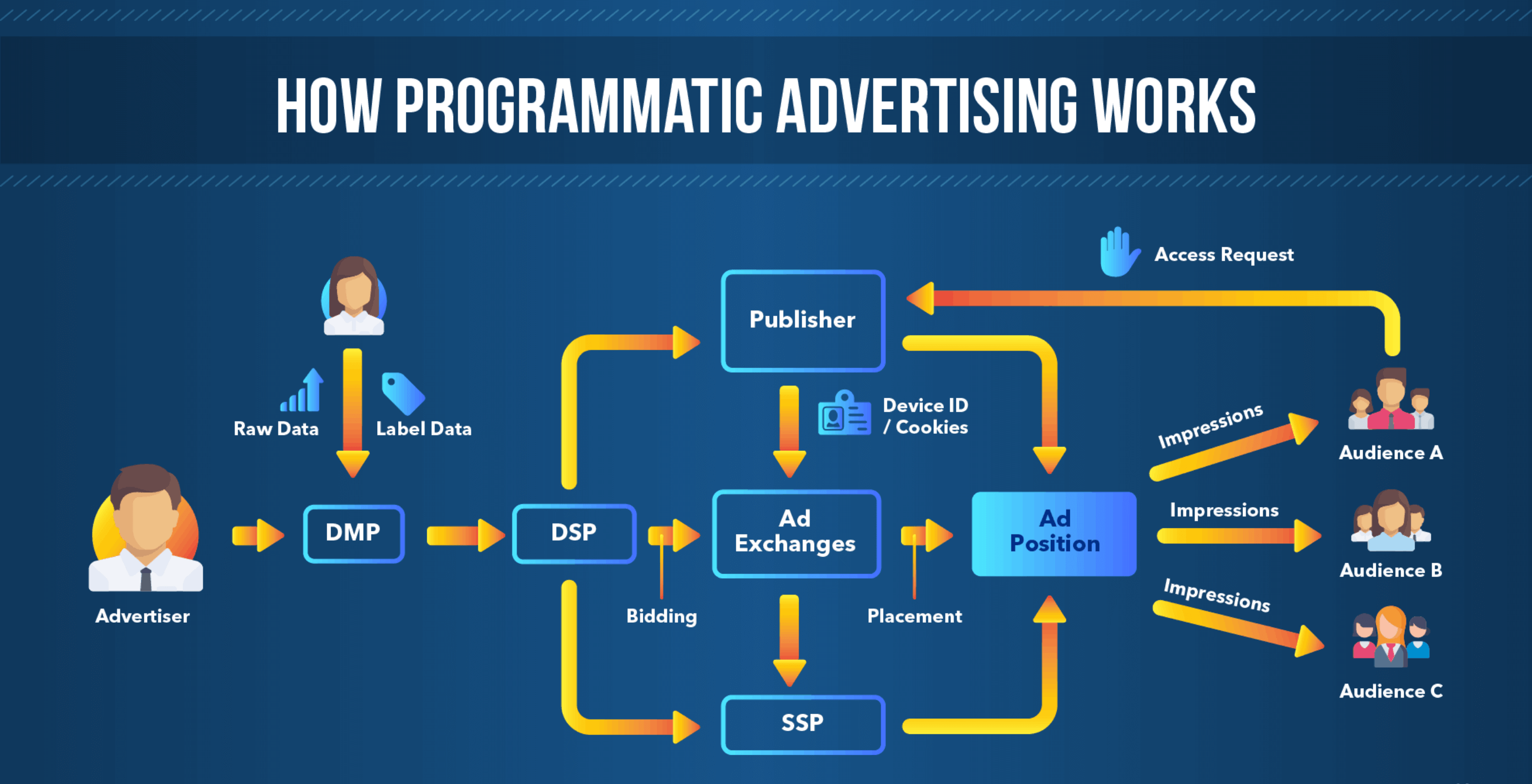Unlock the Secrets: Programmatic Advertising Explained
Welcome to the exciting world of programmatic advertising! If you’re new to the game, you may have heard about this buzzword thrown around in the marketing world. But what exactly is programmatic advertising, and how does it work? Let’s demystify this concept and dive into the basics.
Programmatic advertising is a data-driven technology that automates the buying and selling of online ads in real-time. It allows advertisers to target their audience with precision and efficiency, using algorithms to deliver the right ad to the right person at the right time. This means that instead of relying on manual processes and guesswork, advertisers can leverage machine learning and artificial intelligence to optimize their campaigns.
One of the key components of programmatic advertising is the use of ad exchanges. These are platforms where advertisers and publishers come together to buy and sell ad inventory. Advertisers can specify their target audience, budget, and goals, and the ad exchange will match them with relevant publishers who have available ad space. This process happens in milliseconds, making programmatic advertising incredibly fast and dynamic.
Another important aspect of programmatic advertising is the use of real-time bidding (RTB). This is where advertisers bid on ad impressions in real-time, competing with other advertisers for the opportunity to display their ad to a specific user. The highest bidder wins the auction and their ad is displayed on the publisher’s website. RTB allows for precise targeting and efficient use of ad spend, as advertisers only pay for impressions that are seen by their target audience.

Image Source: scaleo.io
In addition to RTB, programmatic advertising also includes other buying methods such as private marketplace (PMP) deals and programmatic direct. PMP deals allow advertisers to negotiate directly with publishers for premium ad inventory, while programmatic direct involves buying ad space directly from publishers at a fixed price. These buying methods give advertisers more control over where their ads are displayed and who sees them.
Programmatic advertising also offers advanced targeting capabilities, allowing advertisers to reach their audience based on demographics, interests, behavior, and more. By leveraging data from third-party providers and their own first-party data, advertisers can create highly targeted campaigns that resonate with their audience and drive results.
But it’s not just about targeting – programmatic advertising also provides real-time insights and analytics that allow advertisers to measure the success of their campaigns. By tracking key performance indicators (KPIs) such as click-through rate, conversion rate, and return on ad spend, advertisers can optimize their campaigns on the fly and make data-driven decisions to improve performance.
In conclusion, programmatic advertising is a powerful tool that offers advertisers the ability to reach their audience with precision, efficiency, and effectiveness. By leveraging data, automation, and real-time bidding, advertisers can optimize their campaigns and drive results. So if you’re ready to take your advertising to the next level, dive into the world of programmatic advertising and unlock the secrets to success.
Dive Into the World of Programmatic Advertising
Welcome to the exciting world of programmatic advertising! If you’re new to this concept, don’t worry – we’re here to demystify it for you. Programmatic advertising may sound like a complex term, but once you understand the basics, you’ll see how it can revolutionize the way businesses reach their target audience.
So, what exactly is programmatic advertising? In simple terms, it refers to the automated buying and selling of online advertising space in real-time. This means that instead of relying on human negotiations and manual insertion orders, advertisers use technology to target specific audiences and place ads on websites instantly.
One of the key advantages of programmatic advertising is its ability to reach the right audience at the right time. By utilizing data and algorithms, advertisers can target users based on their demographics, interests, and online behavior. This targeted approach ensures that ads are shown to the most relevant audience, increasing the chances of engagement and conversion.
Another benefit of programmatic advertising is its efficiency. By automating the process of ad buying, advertisers can save time and resources that would have been spent on traditional methods. This allows businesses to optimize their ad campaigns in real-time, making adjustments based on performance data to achieve better results.
But how does programmatic advertising actually work? It all starts with the advertiser setting their campaign goals and defining their target audience. They then use a demand-side platform (DSP) to bid on ad inventory across various websites and apps. The DSP uses algorithms to analyze data and determine the best placement for the ad, taking into account factors such as user behavior and the value of the ad space.
On the other side, publishers use a supply-side platform (SSP) to make their ad inventory available for purchase. The SSP connects with ad exchanges, where advertisers and publishers come together to buy and sell ad space in real-time auctions. Through this process, advertisers can reach their target audience on a wide range of websites and apps, maximizing their reach and impact.
It’s important to note that programmatic advertising is not a one-size-fits-all solution. Advertisers need to continuously monitor and optimize their campaigns to ensure they are achieving their desired results. This may involve testing different ad creatives, adjusting targeting parameters, and analyzing performance data to make data-driven decisions.
In conclusion, programmatic advertising offers a powerful and efficient way for businesses to reach their target audience online. By leveraging data and technology, advertisers can create targeted campaigns that drive engagement and conversions. So, if you’re ready to dive into the world of programmatic advertising, buckle up and get ready for an exciting journey ahead!
Understanding the Basics of Programmatic Advertising